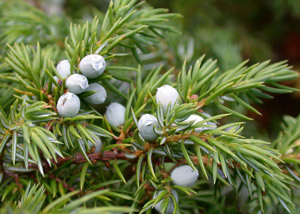Walking With Lavender
Ah, this is the time of year that here in America,
it is time for the walking in fields of Lavender...
So refreshing, so beautiful, so soft yet crisp,
what more could one ask for in a floral that is
both lovely, and useful medicinally and aromatically.
Lavandula (common name lavender) is a genus of 39 known species of flowering plants in the mint family Lamiaceae. It is native to the Old World and is found from Cape Verde and the Canary Islands, southern Europe across to northern and eastern Africa, the Mediterranean, southwest Asia to southeast India. Many members of the genus are cultivated extensively in temperate climates as ornamental plants for garden and landscape use, for use as culinary herbs, and also commercially for the extraction of essential oils. The most widely cultivated species, Lavandula angustifolia is often referred to as lavender, and there is a colour named for the shade of the flowers of this species.
The names widely used for some of the species, "English lavender", "French lavender" and "Spanish lavender" are all imprecisely applied. "English lavender" is commonly used for L. angustifolia, though some references say the proper term is "Old English Lavender". The name "French lavender" may be used to refer to either L. stoechas or to L. dentata. "Spanish lavender" may be used to refer to L. stoechas, L. lanata or L. dentate.
(from wiki)
This is one of my favorites, of all herbs to distill personally.
It not only infuses the workshop with a wonderful and
stimulating scent, but it also is one of the most personally
rewarding to distill, as its volume is quite considerable for
the work usually required by a distiller to make it ready to
use in products and perfumes, within an hour of beginning
the process of distillation, it is readily releasing its aromatic
oil, and quite fast. Some items are so very laborious to produce,
but lavender always rewards bountifully. Not all lavenders are
created equal. For my own practice, I prefer the cultivars of
'Provential' Lavender- They are softer yet strong in their scent,
more suited to use in parfum manufacture, not so 'herbal' in
their presentation. Also, quite a lot depends on when, where,
and what part of lavender it is that one distills. When I run
short of my own supply of personally distilled lavender, I have
to be very selective with the kind I buy from outside sources,
as many of them distill the whole plant (as the stems and leaves
also yield essential oil) and this produces that smell that is more herbal and medicinal, rather than floral. So when I distill, I
distill ONLY the floral spikes. And to increase its desirable parfum applicability, I sometimes co-distill it with certain precise other plants that have a high ionone yield, the combination brings out a more desirable, and soft scent, much more useful in eau d' parfum.
It is an indispensable ingredient factor in all cologne formulas.
But this is not its only use. In aromatherapy, it has both calming and focusing powers in its scent. For aromatheraputic purposes, it combines so excellently with pure Ensans (Frankincense) oil. This blend relieves stress, and relaxes while focusing the mind. If one can afford true Attar of Honeysuckle, a little admixture of this to the two aforementioned, makes for a very effective calmer and stress reliever. If one combines it with organic bases of lotion for topical use, it is excellent for burns (sunburns to other types of burns damaging to the epidermis). It may be applied 'neat' (full strength) to cuts and contusions and bruises. It makes an excellent ingredient in products for men's damaged work hands. If combined with Chamomile, (Bleue) (a transformed, fermented form of chamomile that is deep blue in color), it is a par excellent choice in products for babies tender skin, used in lotions, baths, or diaper rash remedies. consult a local herbalist for proper percentages when making products for your baby for home use.
But this is not its only use. In aromatherapy, it has both calming and focusing powers in its scent. For aromatheraputic purposes, it combines so excellently with pure Ensans (Frankincense) oil. This blend relieves stress, and relaxes while focusing the mind. If one can afford true Attar of Honeysuckle, a little admixture of this to the two aforementioned, makes for a very effective calmer and stress reliever. If one combines it with organic bases of lotion for topical use, it is excellent for burns (sunburns to other types of burns damaging to the epidermis). It may be applied 'neat' (full strength) to cuts and contusions and bruises. It makes an excellent ingredient in products for men's damaged work hands. If combined with Chamomile, (Bleue) (a transformed, fermented form of chamomile that is deep blue in color), it is a par excellent choice in products for babies tender skin, used in lotions, baths, or diaper rash remedies. consult a local herbalist for proper percentages when making products for your baby for home use.
So here here, to Lavender, a foremost in natures healing aromatic oil cabinet! And enjoy your summer ends....





 Juniper berry essential oil is derived from the berry-like seed cones of Juniperus communis, which belongs to the Cupressaceous family. The genus Juniper is divided into at least two subspecies with frequent intermediates which can vary in habit from a low, spreading bush to a small columnar, single stemmed tree.
Juniper berry essential oil is derived from the berry-like seed cones of Juniperus communis, which belongs to the Cupressaceous family. The genus Juniper is divided into at least two subspecies with frequent intermediates which can vary in habit from a low, spreading bush to a small columnar, single stemmed tree.

